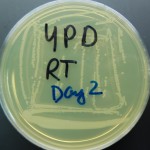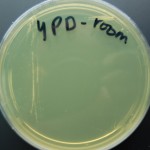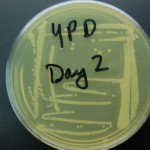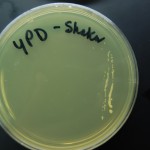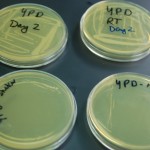Based on the results from yesterday I’ll be carrying out the next phase of the experiment. I set up starter cultures to grow in DDW, DI water, and D2O so I can do hourly time points tomorrow starting early and hopefully getting about 7 hours of data (instead of 5 like yesterday).
I had grown yeast on solid media yesterday and got a bunch of colonies today, so I plucked three colonies and inoculated them in the liquid media stated above (YPD broth).
